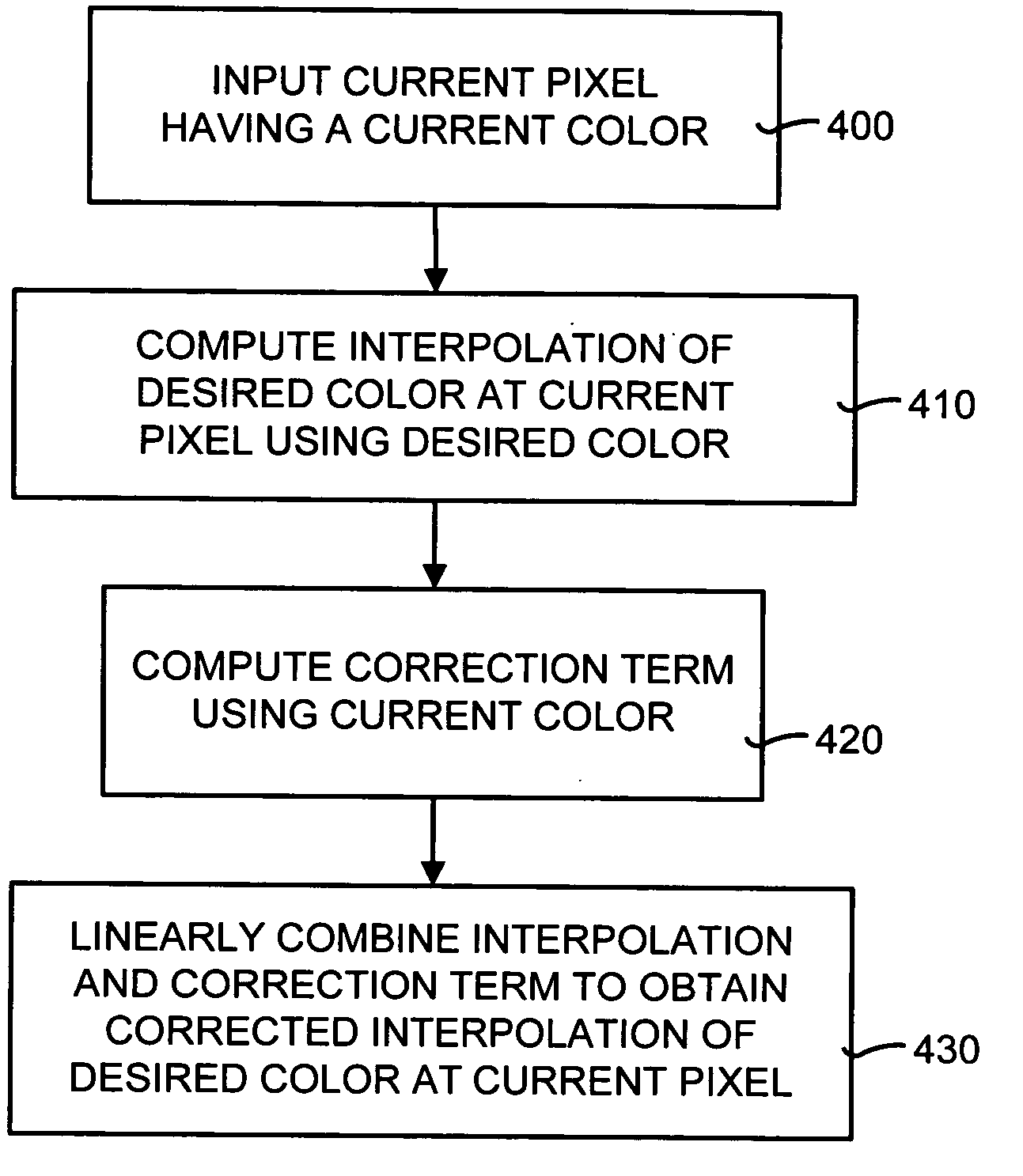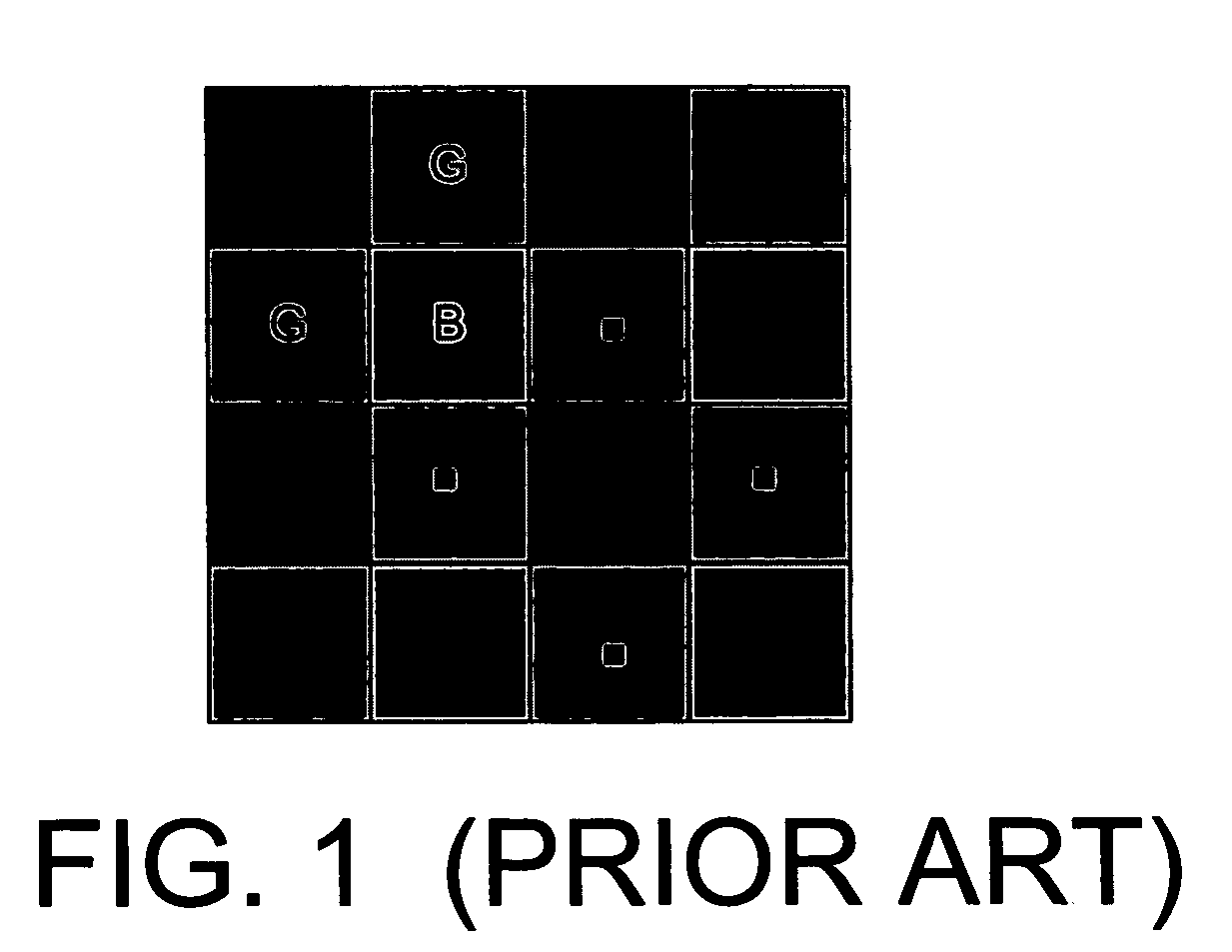High-quality gradient-corrected linear interpolation for demosaicing of color images
a demosaicing and color image technology, applied in the field of digital color image processing, can solve the problems that the gradient-corrected linear interpolation method and system outperform many prior art nonlinear demosaicing techniques having a much greater complexity, and achieve the effects of cost saving, improved performance and simple implementation
- Summary
- Abstract
- Description
- Claims
- Application Information
AI Technical Summary
Benefits of technology
Problems solved by technology
Method used
Image
Examples
working example
IV. Operational Details and Working Example
[0077]FIG. 5 is a general flow diagram illustrating the gradient correction computation process. In particular, a gradient-correction gain is determined (box 500). As detailed below, the gain may be determined in a variety of ways. Next, a region of support is defined around a current pixel in a color image (box 510). This region of support is defined as a size of a pixel neighborhood whose color values are considered for computations associated with any given pixel, such as the current pixel. These computations includes computing an interpolation and computing a correction term (such as a gradient).
[0078] A gradient correction then is computed (box 520). This gradient is computed using the current pixel (having a current color) and pixels within the region of support also having the current color. The gradient-correction gain then is applied to the gradient correction (box 530). It should be noted that each of the gradient-correction gain...
PUM
 Login to View More
Login to View More Abstract
Description
Claims
Application Information
 Login to View More
Login to View More - R&D
- Intellectual Property
- Life Sciences
- Materials
- Tech Scout
- Unparalleled Data Quality
- Higher Quality Content
- 60% Fewer Hallucinations
Browse by: Latest US Patents, China's latest patents, Technical Efficacy Thesaurus, Application Domain, Technology Topic, Popular Technical Reports.
© 2025 PatSnap. All rights reserved.Legal|Privacy policy|Modern Slavery Act Transparency Statement|Sitemap|About US| Contact US: help@patsnap.com



